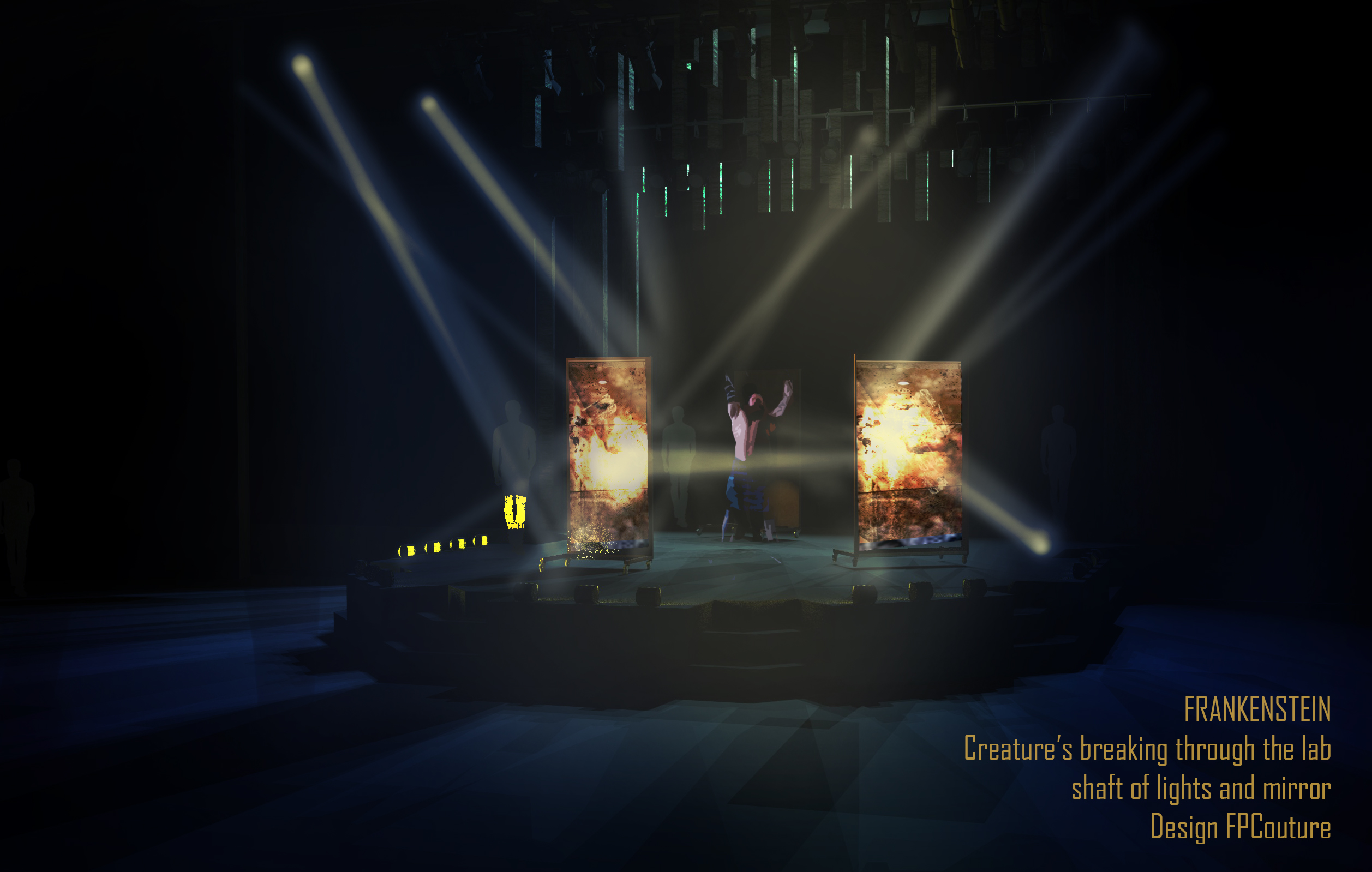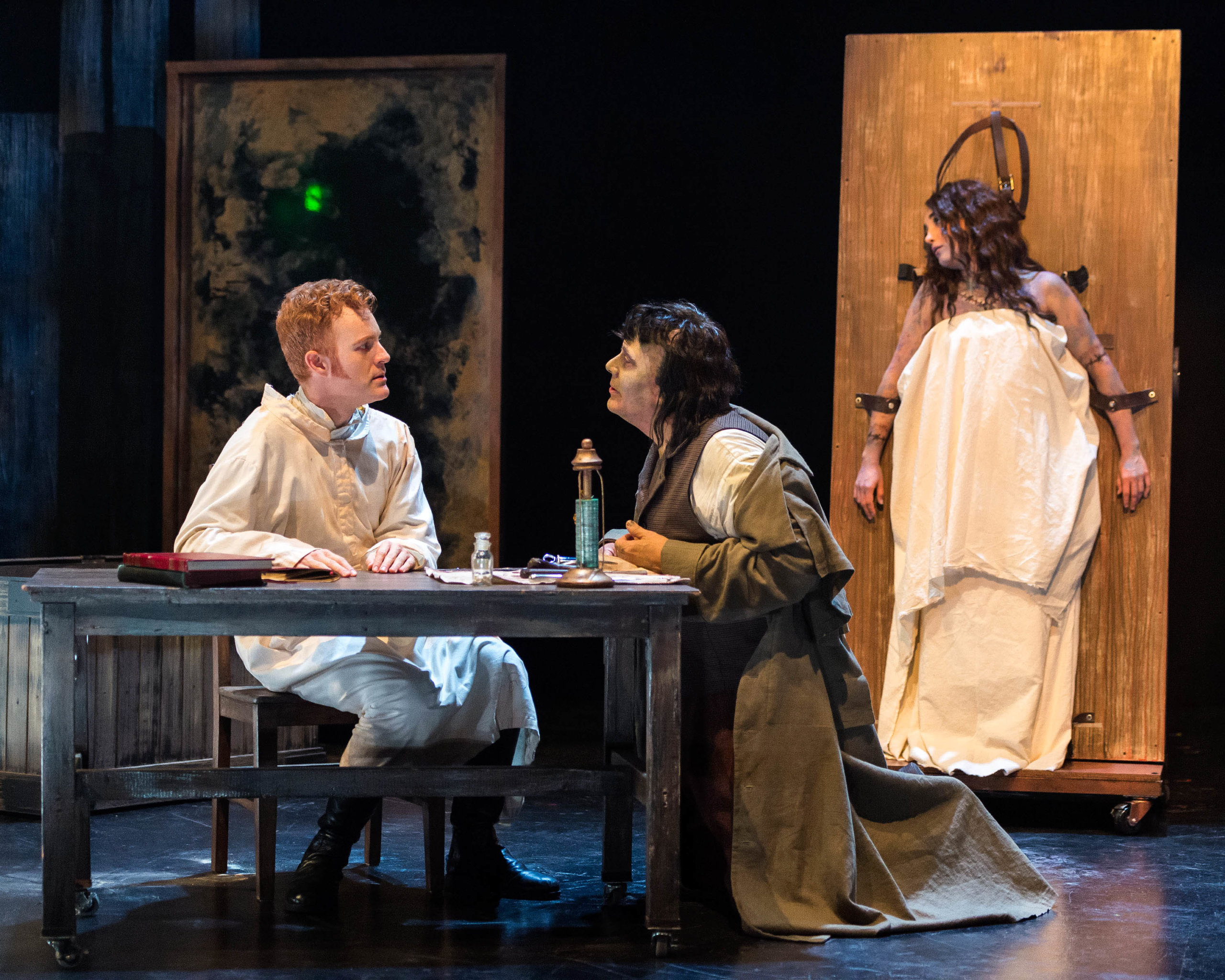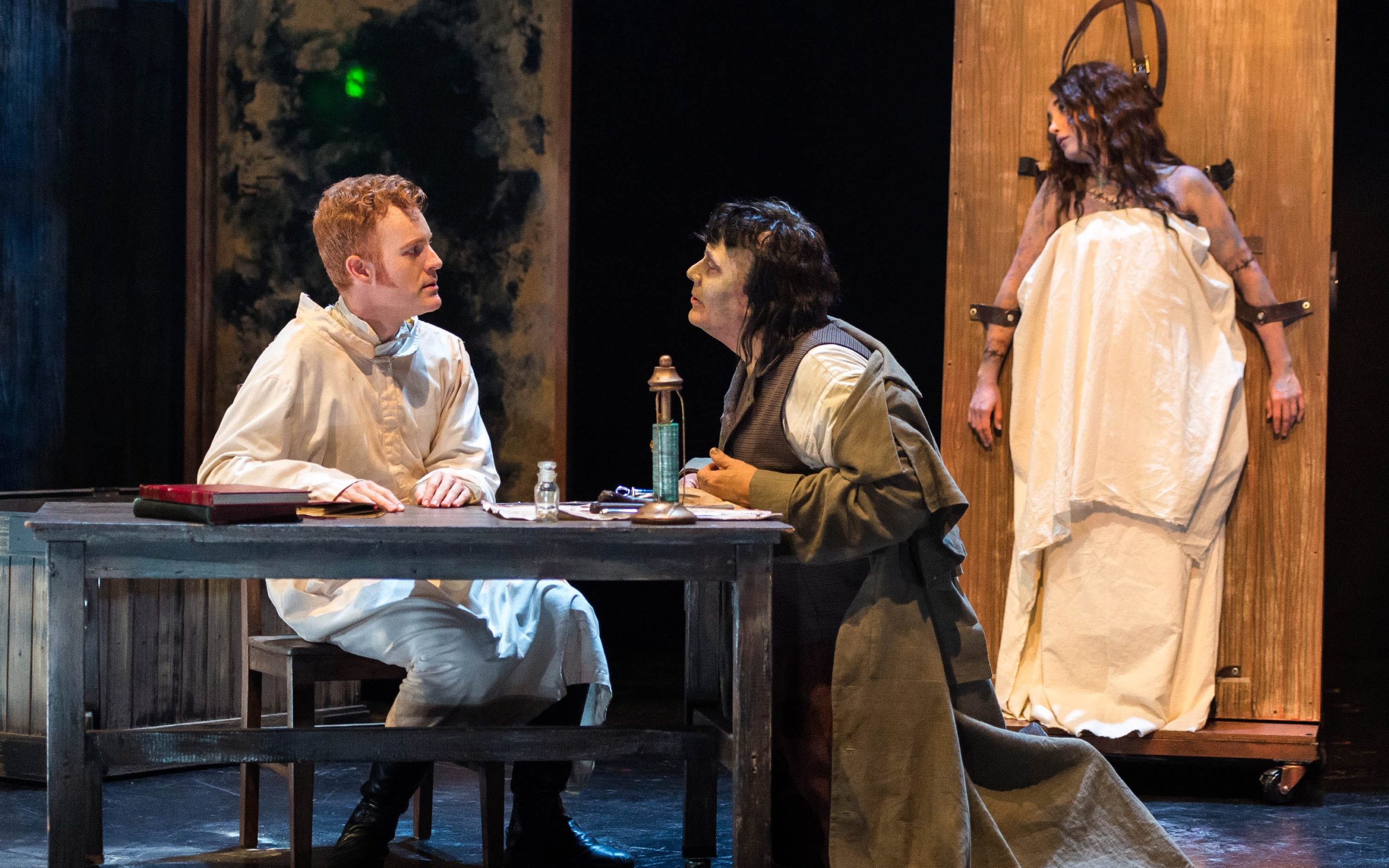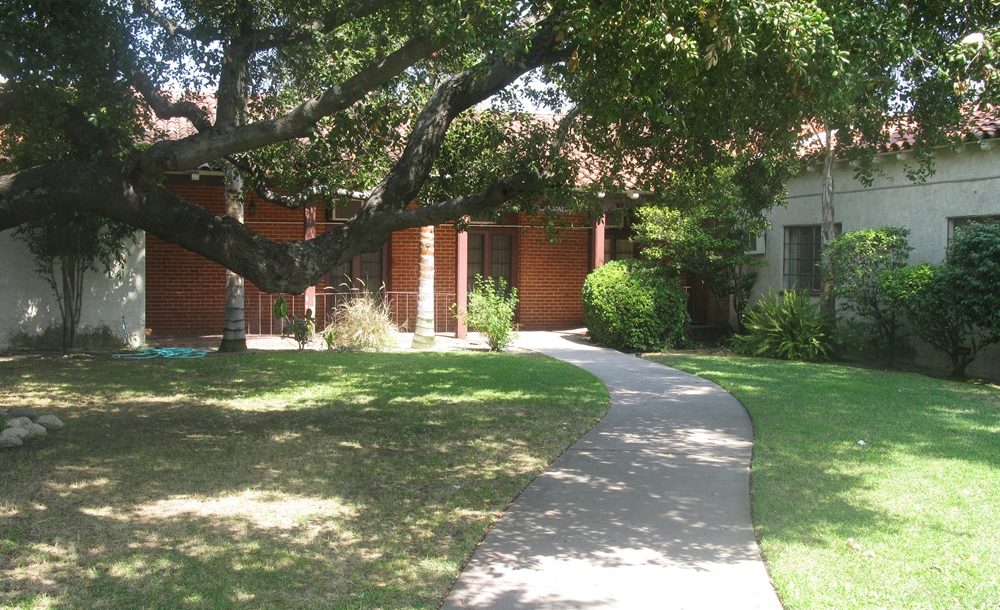
By May S. Ruiz
A Noise Within (ANW) opens its 2019-2020 season ‘They Played with Fire’ with the California premiere of Nick Dear’s ‘Frankenstein.’ Adapted from the original novel by Mary Shelley and directed by Michael Michetti, it is a stand-alone production from August 11 to September 8, 2019.
Michael Manuel, who was last seen on the ANW stage as Iago in Shakespeare’s ‘Othello,’ stars as the Creature. Playing Victor Frankenstein is resident artist Kasey Mahaffy and taking the role of Elizabeth/female creature is Erika Soto.
Shelley’s most renowned work, ‘Frankenstein’ tells the story of a creature who comes back to wreak destruction after he is cast away into a hostile world by his creator. Dear’s adaptation of the Gothic tale depicts the themes of social rejection, intellectual hubris, and the emergence of good and evil.
Michetti pronounces, “By telling the story from the point of view of the Creature, this highly theatrical adaptation of Mary Shelley’s beloved novel delivers not only the terror we expect from the story, but a surprisingly thoughtful and moving exploration of society’s role in teaching and perpetuating violence.”
Scenic designer Francois-Pierre Couture has been tasked with providing ‘Frankenstein’ the backdrop and atmosphere that reflects Michetti’s vision. A transplant from Montreal, Canada, Couture is the rare artist with a full plate in both the artistic and academic fields.
I chat with Couture recently to find out how he ended up in Los Angeles, what teaching means to him, and why collaboration is what he does best.
Couture says, “When I was graduating from university in Montreal, I went to URTA (University/Resident Theatre Association), which is where students who are looking to go to graduate school for theatre programs have the opportunity to meet representatives from different universities in the U.S. (think College Fair). After presenting our portfolio, we were interviewed by school representatives.
“There weren’t that many schools from New York; I can’t remember if Yale and NYU were represented that year at URTA. But I was really considering going to either UCLA or CalArts – I thought it would be fun to go to the West Coast and explore that region of the United States. At that point I hadn’t been to Los Angeles; the first time was when I visited the schools. In fact, I went twice because I looked at both schools on separate trips. UCLA offered me a pretty hefty scholarship to cover my studies, including some living expenses. I waited a year to give me time to think about it and, in the end, I attended UCLA and earned my MFA (Masters in Fine Arts).”
Asked what made him stay, Couture replies, “I suppose when you study for three years in a certain environment, it grows on you. I also got in touch with The Actors’ Gang right away and started designing for them and I became their production manager for three years. One thing led to the next – I started working and then I established a career in L.A. In the process, I met people here and it became my little world.”
Besides doing scenic, lighting, and projection design, Couture teaches at UCLA, Cal State Long Beach, and is a full-time professor at East Los Angeles College (ELAC).
Couture relates how he discovered that teaching was also his calling. “About 10 years ago, when I started my grad studies at UCLA, through the Actors’ Gang I found a part-time teaching job at Culver City High School. One of my colleagues, who was also an ELAC teacher, told me about an opening there. So I started teaching at ELAC on a part-time basis.
“Things were happening all at once then – I was studying for my graduate degree, I was transitioning from a full time production manager job for the Actors’ Gang to part-time teacher, and growing my design career. When I got into the academic world, I got pulled further into it. I started teaching at Pepperdine, Loyola Marymount University, Cal State Long Beach, Cal State Northridge, UC Santa Barbara, and UCLA. At ELAC and UCLA I supervise students in their production work and mentor them.”

“It’s extremely rewarding to be able to teach someone what you know and show them your process,” continues Couture. “It’s very healthy in many ways because it forces me to understand what I’m doing on an academic and intellectual level. Just like others who work in theatre, I don’t have time to intellectualize what I do because I do shows back-to-back. Going back to basics helps me secure the foundations again. It’s a symbiotic relationship – teaching young people, seeing them grow, and giving them opportunities, especially here in ELAC.
“A lot of our students come from communities who have no access to theatre, who don’t think of theatre as a source of employment that’s desirable for them. So it’s so gratifying to be able to offer all that to young people from varied backgrounds. One of my lighting students is going to do his graduate studies on the East Coast, some are going to CalArts, another is going UC Irvine, and one will attend Cal State Fullerton next year. Many of our theatre students are also doing great things, someone is right now finishing his Master’s in directing at UCLA. In the ten years that we’ve devoted to this program we’ve been able to help our demographics enter a field that was previously underrepresented. ELAC is also the official education partner of CTG’s (Center Theatre Group, which includes the Ahmanson, Taper, and Kirk Douglas) outreach program. That direct relationship is essential to our success.”
It wouldn’t be a stretch to say that education outreach and artistic work are rarely done by the same person, I opine. Couture says, “It’s hard; there’s a lot of hours involved. But, far from being the only one working on it, I am part of a big team. And we have an entire faculty working with us to create this outreach. With our strengths and connections in the industry, we’re able to advance this program.”
“Which is the day job and which is the side job?” I ask. “That’s a tough question,” responds Couture. “I’ll have to say teaching is my day job and designing is my night job. During the summer and winter months, I choose not to teach classes and that’s when I cram all the prep and design work. During the school year, I’m at school from 9 am to 5 pm four or five days a week, with pockets of down time. But, of course, during production my hours increase – I wake up at 4:00 or 5:00 in the morning to do my day job then go home to work at night. When I’m at the theatre, usually Thursday through Sunday, I work day and night.”
In the last 13 years, Couture has worked as a scenic, lighting, and projection designer. He has received multiple Ovation, LADCC, LA Weekly awards & nominations. Designs include: ‘Invisible Tango,’ ‘A Picasso,’ at the Geffen Playhouse; ‘Everything that Never Happened,’ ‘With Love and Major Organ,’ Boston Court Pasadena; ‘Destiny of Desire,’ Oregon Shakespeare Festival, Arena Stage Theatre, South Coast Repertory& Goodman Theatre; ‘Jackie Unveiled,’ Wallis Theatre; ‘The Mexican Trilogy, an American History,’ Los Angeles Theatre Center; ‘Metamorphoses,’ ‘Everything is Illuminated,’ Ensemble Theatre Company; ‘Médée’ and ‘Teseo,’ Chicago Opera Theatre; ‘L’Elisir d’Amore,’ and ‘Cold Mountain,’ Music Academy of the West.
Couture recalls the very first award he got, “Charles McNulty, the theatre writer for the L.A. Times, featured me in his column as one of ‘Faces to Watch’ in 2007 when I designed ‘Love’s Labor’s Lost’ at The Actors’ Gang Theatre. It took me about six years working a lot of small theatres doing scenic and lighting projects to build my reputation. To this day I still do between 10 and 20 productions a year and I didn’t get the work that I’m getting now until Charles’s endorsement.
“However, the awards and acclaim don’t affect how I work. The process is so tied to my relationship with the director and the other designers. The risks we take are based on what we’re trying to do with the play and how we want to tell the story. I can’t think about awards when I’m designing because then the pressure is put in the wrong place. If I work well with my co-designers and everybody on stage and I try to be innovative, am true to the play, and give what the play needs, then the award will hopefully follow. The goal is to do good work and do something that the audience will perceive, that will communicate the story. And if we get noticed and are given awards, then that’s wonderful. Awards are subjective in many ways and you’re judged against other people’s work. So if, one year, others also did amazing work and you didn’t win an award, it doesn’t mean you didn’t do good work.”

It was Michael Michetti, Artistic Director at Boston Court Pasadena, who approached Couture to do the scenic design for ‘Frankenstein.’
Couture discloses, “I’ve done about ten productions there; the first show I did with him was for ‘Dinosaur Within,’ in 2011. Michael is a very talented and accomplished director. He and I respect each other’s work immensely; we try to work together but there were always scheduling conflicts. It was really fortunate that I was available to do ‘Frankenstein.’ The design process took about two to two-and-a-half months. Michael and I talked about the play at the outset; then in our next meeting, I came in with more concrete idea designs.”
“I think what I’m good at, and what I do a lot, is balancing reality and abstraction. I often work on complicated plays that have multiple locations and that show emotional content. I try to encompass all the elements and synthesize them to create a design on the stage. I want to think I’m a good collaborator; I love to involve everybody else on the team. Lighting designer Jared Sayeg and I had a lot of conversations about ‘Frankenstein’s’ set and lighting design. We knew it was going to be a big project that involves a lot of work and that it was going to be demanding because it’s a challenging play.”
“So what can the audience look forward to?” I query. “The audience can expect a scenic design that is emotionally charged; that which emphasizes the struggle of the creature, visually and viscerally,” expounds Couture. “We utilized chiaroscuro – light and shadow – that echo the layers and dark corners of all the characters. It’s also a design that people will find surprising, maybe thought-provoking in some ways, as we don’t represent the reality of all the spaces because it’s a very cinematic universe. But it all makes sense.”
ANW’s ‘Frankenstein’ is indeed a stunning first production for this season. Michael Manuel’s superb acting, supported by a remarkable cast and an extraordinary design team, and helmed by a visionary director, brilliantly bring to life Mary Shelley’s much-loved novel. If the audience’s reaction during the opening weekend was any indication, ‘Frankenstein’ could expect a monstrously successful run.







